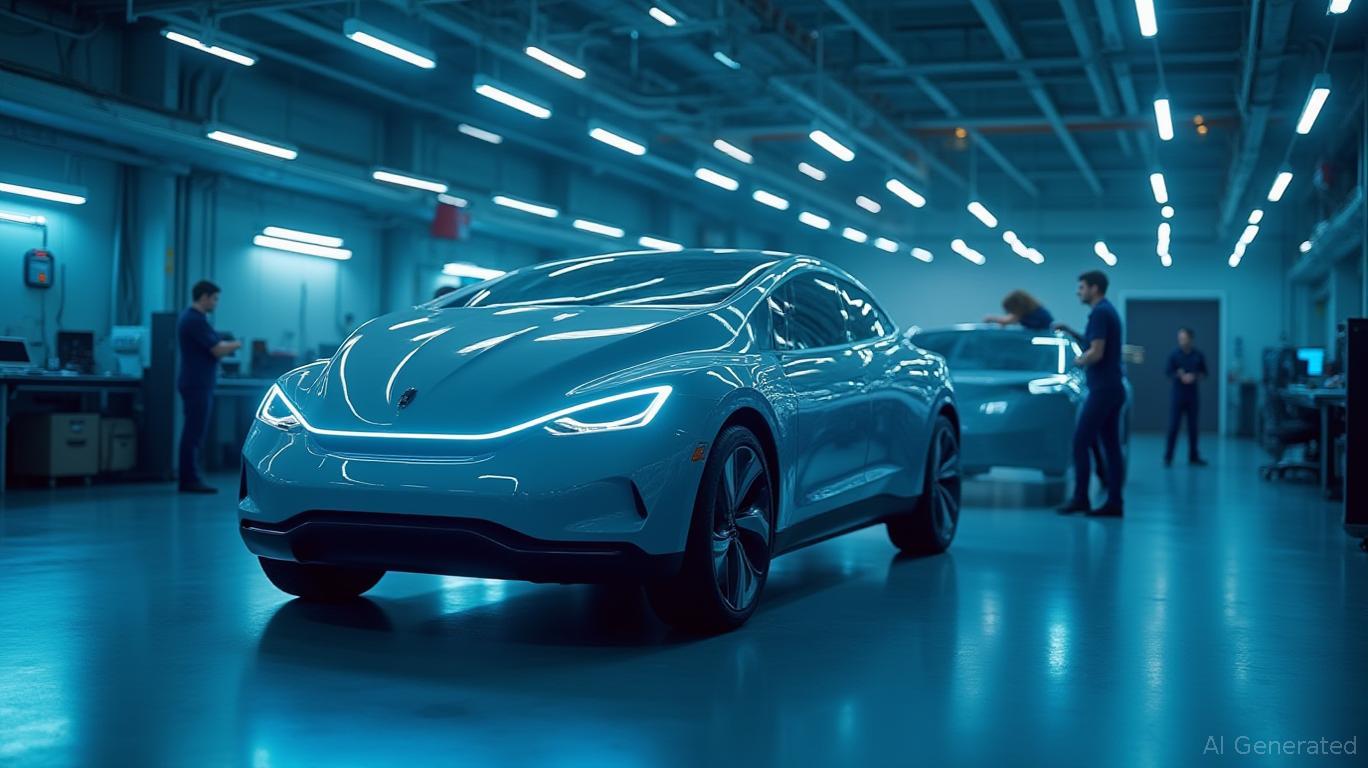Marelli's Chapter 11 Filing: A Strategic Reset for Automotive Tech Dominance

The automotive industry is at a crossroads. Electric vehicles (EVs) are reshaping demand, while supply chain fragility and high debt loads have left many suppliers vulnerable. Into this turbulent landscape steps Marelli Holdings Co. Ltd., which filed for Chapter 11 on June 11, 2025. Far from a defeat, this restructuring represents a meticulously planned reset—a chance to deleverage, stabilize liquidity, and reclaim competitiveness. For contrarian investors, the question is clear: Can Marelli's strategic restructuring unlock a valuation recovery?
The Restructuring Blueprint: Debt as the Catalyst
Marelli's $4.9 billion debt burden, driven by high fixed costs and underperforming EV contracts, was its Achilles' heel. The restructuring plan, backed by 80% of senior lenders, offers a lifeline:
1. $1.1 billion in debtor-in-possession (DIP) financing secures liquidity, ensuring uninterrupted operations across 170 global manufacturing sites.
2. Debt-for-equity conversion: DIP lenders will own 100% of the reorganized company, eliminating secured debt entirely.
3. A 45-day overbid window invites rival bidders like India's Motherson Group to submit improved terms, creating a competitive valuation floor.
The Restructuring Support Agreement (RSA) ensures critical stakeholders are aligned, reducing the risk of protracted litigation.
Deleveraging and Liquidity: The Immediate Payoff
Before restructuring, Marelli's debt-to-equity ratio was unsustainable, with funded debt exceeding $4.9 billion. Post-reorganization, the elimination of secured debt and infusion of DIP capital will slash leverage, freeing cash flow for innovation.
The DIP financing also addresses operational continuity, a non-negotiable for a company supplying giants like Nissan and Stellantis. By maintaining production and supplier relationships, Marelli avoids the costly disruptions that could cripple its recovery.
Equity Conversion: A New Ownership, A New Era
The shift to lender-controlled equity is a double-edged sword. While it cedes control to hedge funds like Strategic Value Partners (SVP), it also aligns incentives with long-term growth. SVP's expertise in distressed assets could drive cost efficiencies, while the overbid window ensures fair value discovery.
However, risks linger. A hostile bid from Motherson or another suitor could disrupt the RSA's terms, prolonging uncertainty. Investors must monitor the 45-day overbid period closely—success here could unlock hidden value, while failure might trigger governance clashes.
Risks: Supply Chains and Creditor Politics
- Supply Chain Volatility: EV demand fluctuations and rising material costs remain threats. A prolonged recession or tariff hikes could strain margins anew.
- Creditor Negotiations: Japanese lenders, who hold half the senior debt, demand an 11% payout—a fraction of their claims. Disputes over terms could delay the plan's execution.
- Operational Overhang: While all 50,000 employees are retained now, future cost-cutting (e.g., plant closures) could spark labor issues or quality control lapses.
The Investment Case: Contrarian Opportunity or Trap?
For investors willing to bet on valuation recovery, Marelli offers asymmetric upside:
- Post-reorg equity: DIP lenders' 100% stake positions the company to pivot toward high-margin EV tech, where its expertise in lighting and powertrain systems remains unmatched.
- Industry tailwinds: Global EV adoption is projected to grow at 12% CAGR through 2030, favoring suppliers with lean balance sheets.
- Low valuation risk: The Chapter 11 process caps downside, as the DIP financing and RSA provide a structured path to emergence.
The Bottom Line: A High-Reward, High-Risk Bet
Marelli's restructuring is no guarantee of success, but it is a strategic necessity. For contrarian investors with a long-term horizon, the stock (post-reorganization) could offer compelling upside if the company executes its tech pivot and navigates creditor dynamics smoothly.
Investment advice:
- Hold until the overbid period concludes (July–August 2025).
- Buy if the company emerges with a clean balance sheet and no major bidders disrupt terms.
- Avoid if supply chain disruptions persist or creditor disputes escalate.
In an industry where survival hinges on agility and innovation, Marelli's reset may yet position it to lead—not just survive—the EV revolution.
This article is for informational purposes only. Always conduct your own research or consult a financial advisor before making investment decisions.

Comments
No comments yet